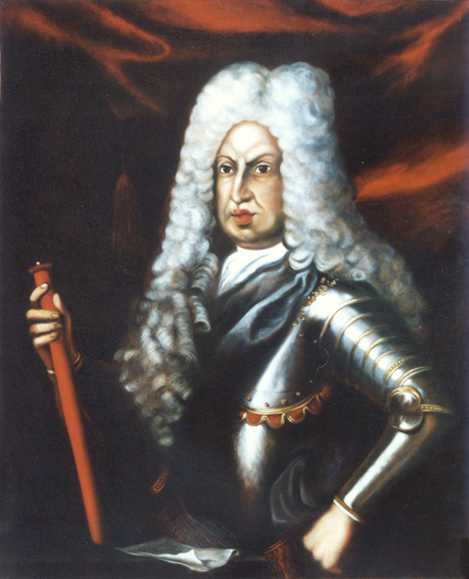
Gian Gastone de’ Medici, Grand Duke of Tuscany (1671-1737) was the son of Cosimo III de’ Medici.
He showed promise as a youth, gaining a reputation for learning that ranged from antiquarian studies to an interest in the work of the mathematician Leibniz. At the same time, however, he was prone to bouts of hypochondria and gradually declined into a life of dissolution and drunkenness.
To some extent this appears to have been due to his unhappy marriage, celebrated in Düsseldorf on 2 July 1697, to the unprepossessing Anna Maria of Saxe-Lauenburg, which necessitated his enforced absence from Florence and residence in remote Reichstadt and then in Prague.
He returned to Florence in 1708 and on the death of his brother Ferdinando in 1713 was required to prepare himself for the succession ten years later. As Grand Duke, Gian Gastone repealed much of the legislation imposed by his father to control popular morality and relaxed literary censorship, while his political appointments were directed towards reducing church influence in his state.
Measures were also taken by him to reduce the national debt, though the economies in court expenditure he introduced resulted in the departure from Florence of many artists and especially architects, including Alessandro Galilei and Ferdinando Fuga. His own artistic tastes are difficult to define, but he appears to have shared his brother’s interest in the work of the Genoese painter Alessandro Magnasco and was a patron of the sculptor Giuseppe Piamontini.
In 1729 he retired from public life and spent the last eight years of his reign in bed, entertained by the companies of young debauchees he had gathered about him and who were known as the ruspanti. On his death the title passed to Francis Stephen, Duke of Lorraine (1708–65), husband of Maria-Theresa of Austria.
